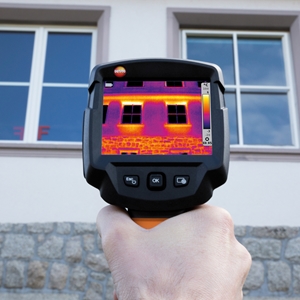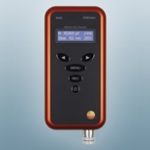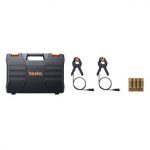Because it is a relatively innovative and exciting concept, it’s only natural that there remains a lot of confusion surrounding thermal imaging technology.
However, the science behind thermal imaging is not as complicated as it might at first seem. In fact, thermal imaging can be easily explained as the use of infrared radiation to map out a landscape, even when there is no visible light present.
Because all objects above the temperature of absolute zero emit some level of infrared radiation, thermal imaging cameras that can ‘see’ this radiation are able to generate a reliable and accurate image of the landscape.
Thermal imaging technology has many applications in a number of varied yet essential industries. It can be used in the electrical and construction sectors for preventative maintenance and other important tasks, as well as in the healthcare industry.
To help you further understand thermal imaging, we’ve put together this handy glossary to some of the most commonly used terms surrounding this technology.
FOV (Field Of View)
The field of view of a thermal imager refers to the area that can be seen within the device. A number of variables contribute to this factor, including the type of detector in the thermal imager and the type of lens that has been attached. FOV is an important consideration if you would like to review large areas at any given time.
Hot and cold spots
The hot spot on an infrared image refers to the point where the temperature is highest. Meanwhile the cold spot refers to the point where the temperature is closest to absolute zero. Many of today’s modern thermal imaging cameras are capable of pinpointing the hot and cold spot of an image automatically – a useful feature for those trying to work quickly.
Infrared radiation
As mentioned earlier, the concept of infrared radiation is critical to the science behind thermal imaging technology. Infrared radiation is a form of electromagnetic radiation. Because it has longer wavelengths than those in the visible spectrum, it is typically invisible to the human eye. Fortunately, thermal imaging cameras can bring this radiation to life.
Infrared resolution
Essentially, the infrared resolution of a thermal imaging camera refers to the number of data acquisition points that the camera uses to create a visual image. Although slightly different in concept, infrared resolution is similar to standard display resolution in that it can be used to compare the clarity and accuracy of an image.
The higher the infrared resolution of a thermal imaging camera, the crisper the final image will be at further distances.
NETD (Noise Equivalent Temperature Difference)
Noise Equivalent Temperature Difference is perhaps the most important consideration that anyone looking at purchasing a thermal imaging camera will want to take into account. NETD essentially refers to the minimum necessary temperature difference required, in order for the difference to be resolved by a thermal imaging camera.
NETD is measured in milliKelvins (mK) and is also often referred to as thermal sensitivity. If your camera has a smaller NETD milliKelvins rating, it will be more precise and accurate than cameras with a larger NETD.
Temperature range
Temperature range is a fairly self-explanatory term that is used to refer to the minimum and maximum temperatures that a thermal imaging camera can interpret. This figure can vary significantly across various thermal imaging cameras. For example, the testo 870-1 is capable of interpreting temperatures between -20 degrees Celsius and 280 degrees Celsius. Meanwhile the testo 882 is potentially capable of measuring a high temperature range of up to 550 degrees Celsius.
These are just a few of the common terms you are likely to come across while reviewing thermal imaging cameras. For more information, we encourage you to get in touch with a testo professional.









 Reduce cooking oil costs while ensuring quality
Reduce cooking oil costs while ensuring quality Expert knowledge on CO2 monitoring
Expert knowledge on CO2 monitoring Refrigeration knowledge - in 3 modules
Refrigeration knowledge - in 3 modules



